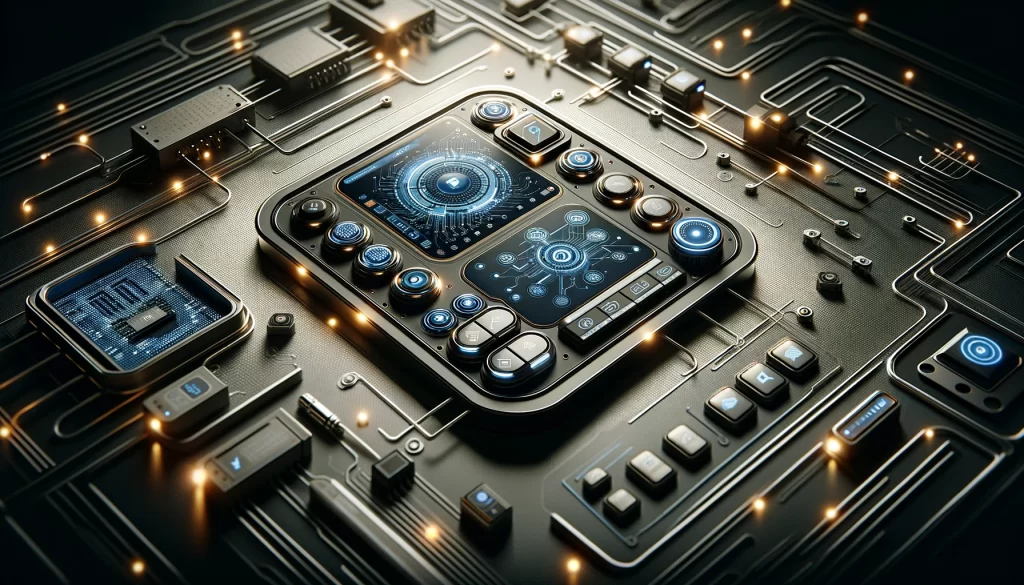Introduction
In the realm of security systems, the integration of efficient and reliable control interfaces is crucial. Custom membrane switch solutions play a vital role in enhancing the functionality and user experience of these systems. This detailed guide explores the significance and application of custom membrane switches in security systems.
Understanding the Role of Membrane Switches in Security Systems
Membrane Switch Basics: Membrane switches are user-interface devices known for their reliability, durability, and versatility. In security systems, they serve as the primary interface for control and monitoring.
Advantages for Security Applications: Their low profile, customizability, and ease of cleaning make them ideal for security systems, where robustness and intuitive use are key.
Designing Custom Membrane Switches for Security
User Interface Design: The design should prioritize ease of use, with clear labeling and intuitive layout to ensure quick and error-free operation, especially in emergency situations.
Durability and Reliability: Given the critical nature of security systems, the switches must be highly reliable and durable, able to withstand constant use and harsh conditions.
Integration with Advanced Technologies: Incorporating touchscreens, LED indicators, and haptic feedback can enhance the functionality and user experience of security interfaces.
Material Considerations
Choosing the Right Materials: Materials should be chosen for their durability and resistance to environmental factors. This includes using high-grade polymers and conductive inks.
Surface Treatments: Anti-glare, anti-vandal, and UV-resistant coatings are essential to protect the switches in various environments, from outdoor settings to high-use public areas.
Customization for Specific Security Needs
Adaptability for Different Environments: Custom membrane switches can be tailored to different environments, such as outdoor, industrial, or office settings, with appropriate materials and designs.
Incorporating Security Features: Features like biometric sensors or RFID technology can be integrated into the membrane switch design for enhanced security measures.
Technological Innovations in Membrane Switches for Security
Smart Integration: Linking membrane switches with IoT and smart home systems for advanced monitoring and control.
Enhanced Data Security: Implementing encryption and secure communication protocols within the switch’s electronic design to safeguard sensitive data.
Manufacturing Process and Quality Assurance
Precision Manufacturing: Emphasizing precision in the manufacturing process to ensure that each component meets stringent quality standards.
Quality Control and Testing: Implementing rigorous testing procedures, including life cycle, environmental, and functional tests to ensure reliability in security applications.
User-Centric Design and Feedback
Ergonomic Considerations: Designing for ergonomics and ease of use, especially in high-stress or emergency situations.
User Feedback Incorporation: Regularly updating designs based on user feedback and evolving security needs.
Case Studies and Applications
Residential Security Systems: Custom membrane switches in home security panels, integrating with alarms, cameras, and monitoring systems.
Industrial Security: Robust membrane switch panels for industrial security applications, designed to withstand harsh conditions and heavy usage.
Public Safety Systems: Designing membrane switches for public safety systems, where quick response and reliability are paramount.
Environmental Impact and Sustainability
Eco-friendly Materials: Utilizing sustainable materials and production processes to minimize the environmental impact.
Energy Efficiency: Incorporating energy-efficient components like LED backlights and low-power electronic designs.
Compliance and Standards
Adherence to Industry Standards: Ensuring compliance with international standards for safety, reliability, and quality in security applications.
Certifications: Obtaining necessary certifications and meeting regulatory requirements specific to security systems.
Future Trends and Innovations
Emerging Technologies: Exploring the integration of emerging technologies like AI and machine learning in membrane switch design for predictive analytics and enhanced security features.
Advancements in Material Science: Investigating new materials and production techniques that offer improved performance and sustainability.
Conclusion
Custom membrane switches represent a critical component in the advancement and efficiency of security systems. Their customizability, reliability, and integration with advanced technologies make them indispensable in modern security solutions. For manufacturers and designers, understanding these aspects is key to developing membrane switch solutions that meet the complex and evolving needs of the security industry.

